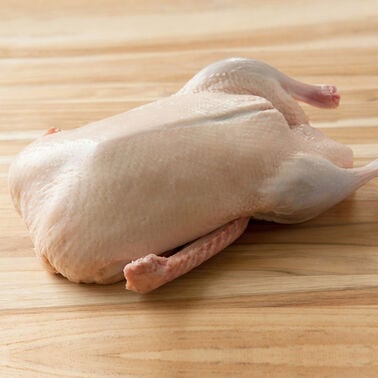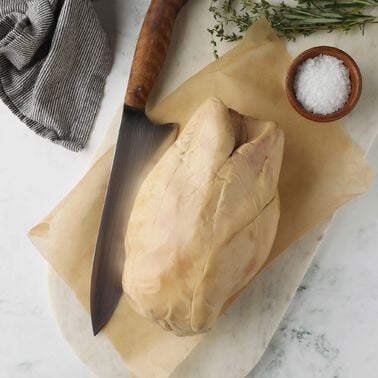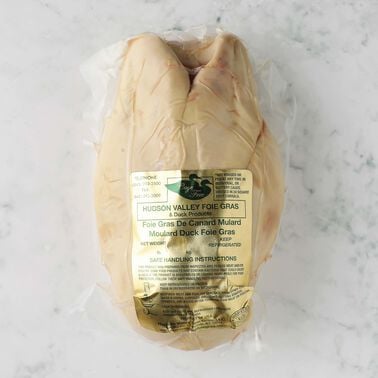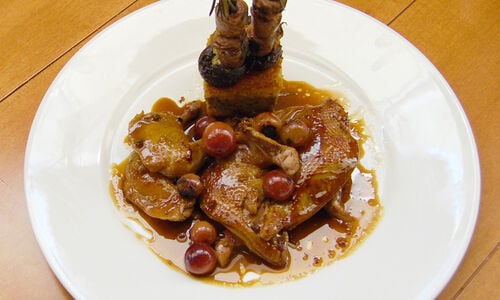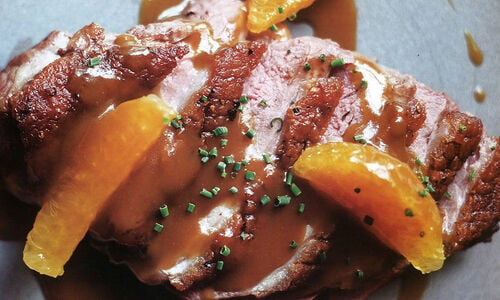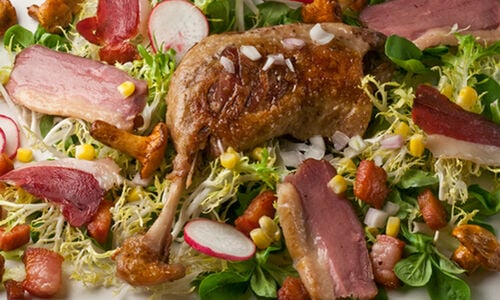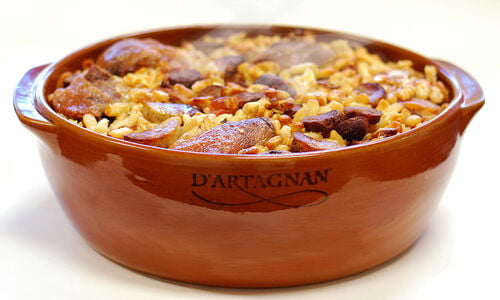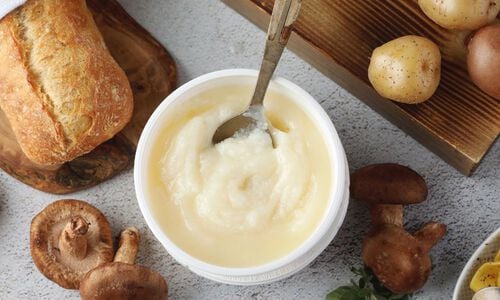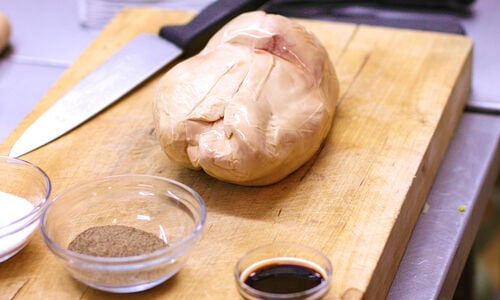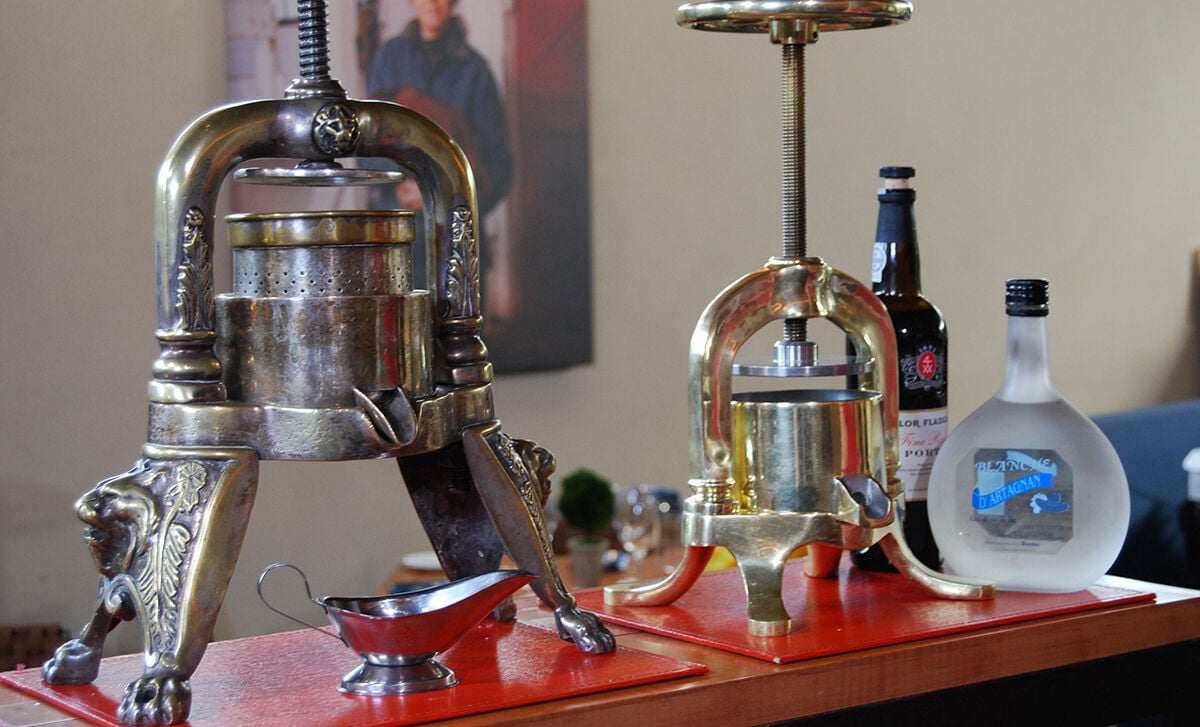
There's foie gras, of course, the production of which is abhorred by many and cherished by many more (us included, obviously). And then there is the ortolan, a small songbird that, due to the traditional preparation -- it is blinded, gorged on grains, drowned in Cognac and then roasted, served, and consumed in a single mouthful-- has become illegal in France, although many intrepid diners continue to find gastronomic speakeasies that continue to serve it.
But one of our absolute favorite dishes -- and kitchen implements -- is the much-lauded and feared duck press. Considered by many to be the most spectacular entree in classical French cuisine, the duck press is a device and method of preparation that was invented by a man named Machenet in Paris at the dawn of the 19th century, quickly becoming popular among the culinarily elite. The contraption and its corresponding dish, canard à la rouennaise (or, "duck in blood sauce") was later adopted by Chef Frèdèric of the restaurant La Tour d' Argent (or "Silver Tower"), making it his restaurant's signature dish, which they continue to serve today.
So, what is this infamous dish often labeled as barbaric and macabre? It begins simply, with one of our favorite things in the world: a roasted duck. The whole duck -- and this includes all of the internal organs, particularly the heart and lungs of the beast, though the liver is removed and reserved -- is seasoned, the skin lightly scored and then roasted. Some chefs, including Daniel Boulud, opt to marinate the duck for up to two days before roasting quickly over very high heat until the duck is appropriately rare. The beautifully roasted bird is carried by the chef to the diners' table, where the rest of the elaborate process continues in full view of the restaurant's guests. The duck's magret (breasts) and legs are removed and reserved, and the chef uses poultry shears to cut the remaining carcass in half lengthwise.
Now comes the fun part.
The chef packs the roasted carcass and internal organs into the duck press, a large, squat, menacing piece of kitchen machinery, usually made from a heavy metal such as brass, with a large crank, a wheel, and four legs that are sometimes, in a delightfully morbid fashion, made to look like duck feet. Many people like to compare the object to a medieval torture device, and, if you get a chance to see one, you'd be hard "pressed" to disagree. The increasing pressure of the crank plate compacts the bird until its bones are pulverized, the organs liquified, and the carcass blood juices out of the animal, all of which sluice through a small spout in the duck press and are collected in a pan, then strained through a fine chinois. The chef then thickens the mixture with the pureed duck liver, adds Cognac and red wine, and reduces it carefully until it achieves a deep burgundy, almost black color. Diners are then treated to thin slices of the duck breast in the exquisite blood sauce, followed by a second course of roasted duck legs and thighs.
Duck presses aren't easy or inexpensive to come by these days, and though pressed duck isn't nearly as popular as it was in nineteenth-century Paris, the tradition of the duck press -- whether or not you consider it macabre or sublime -- continues. And for that, we are most certainly thankful.
